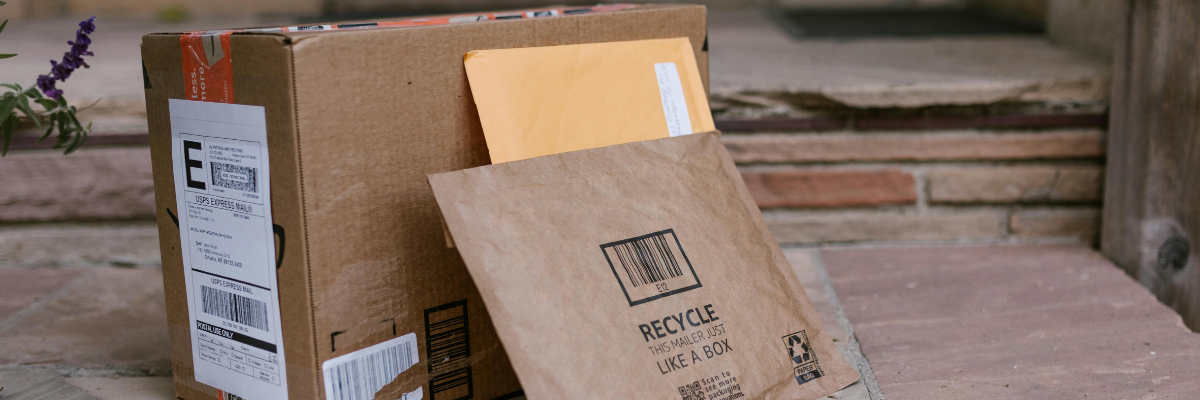Sustainable packaging is now a concrete priority for all companies operating in the European market. With the approval of the new EU Packaging Regulation in April 2024, the European Union has imposed very strict targets to reduce the environmental impact of packaging throughout the entire production and logistics supply chain.

EU Regulation objectives: reduction, recycling, and reuse
The pillars of the new EU Packaging Regulation revolve around three key concepts: reduce, recycle, reuse. The European Union aims to limit the production of unnecessary or hard-to-recover packaging, significantly increase recycling rates, and promote reuse models in sectors such as e-commerce, hospitality, and beverage distribution.
Companies will therefore need to rethink not only materials but also packaging logistics and design. All of this aims to reduce environmental impact and build a supply chain based on eco-friendly packaging and recyclable packaging, which are easier to recover and less costly to manage.
Sustainable packaging: what changes from 2030
Starting in 2030, companies will only be allowed to place eco-friendly packaging on the European market, designed to be fully recyclable or reusable. This represents a radical change for many sectors that still use mixed materials that are difficult to separate, unnecessary overpackaging, or single-use solutions without recovery alternatives. It will be essential to rethink every aspect of the supply chain, from raw material sourcing to end-of-life packaging management.
Which packaging will be banned?
The Regulation sets specific categories of packaging that will be progressively banned. In particular, single-use packaging for food and beverages consumed in bars and restaurants, single-dose packets of condiments, sugar, or sauces, ultra-light plastic packaging for fruits and vegetables, and all multi-layer containers that cannot be mechanically separated to facilitate recycling will disappear. These measures aim to eliminate unnecessary or hard-to-recycle packaging, encouraging companies to move toward more responsible and efficient alternatives.
Deadlines and obligations for companies between 2025 and 2040
Starting in 2025, companies will be required to ensure transparency regarding the composition of the packaging used, apply clear labeling for proper disposal, and begin collecting detailed data on volumes placed on the market. Over the years, the requirements will become increasingly stringent: from 2030, it will no longer be possible to market non-recyclable packaging, and companies will have to demonstrate that they have reduced packaging volumes by at least 5% compared to 2018 levels. By 2035, the reduction target will rise to 10%, and reuse obligations will be introduced in sectors such as e-commerce and food delivery. By 2040, the reduction target will be 15%, and all packaging must fully comply with recyclability or reuse criteria.

Operational checklist to comply with the new Regulation
To comply with the new EU regulation, SMEs, retailers, and logistics operators must:
- Map the current packaging portfolio: verify which are compliant and which will need to be replaced.
- Design new sustainable packaging: prefer single-materials that are easily separable and already recycled.
- Review logistics: optimize volumes and transportation to reduce waste.
- Train staff: update buyers and operators on the management of eco-friendly packaging and regulatory obligations.
- Choose specialized partners: collaborate with suppliers who guarantee certified packaging and tailor-made solutions.
In this context, Hubrise is a strategic ally. Thanks to its dedicated packaging service, it helps global companies and e-commerce select recyclable, reusable, and optimized packaging to reduce costs and environmental impact. Hubrise also supports the integration of sustainable packaging into the supply chain, simplifying compliance with new EU standards.
Competitive advantages of sustainable packaging
Complying with new regulations doesn’t just mean following the law and avoiding fines. Investing in sustainable packaging today is a strategic move to strengthen corporate reputation and differentiate in the market. Consumers, B2B clients, and investors increasingly demand eco-friendly and transparent packaging, rewarding responsible brands that adopt circular economy practices.
Relying on specialized partners like Hubrise, thanks to dedicated packaging services, allows you to turn regulatory constraints into a real competitive advantage: choosing customized, recyclable, and reusable solutions means reducing management costs, staying ahead of competitors, and strengthening the trust of customers and stakeholders. Preparing now for the new EU Regulation is therefore the smartest choice to protect business continuity, avoid risks, and build a truly sustainable future.